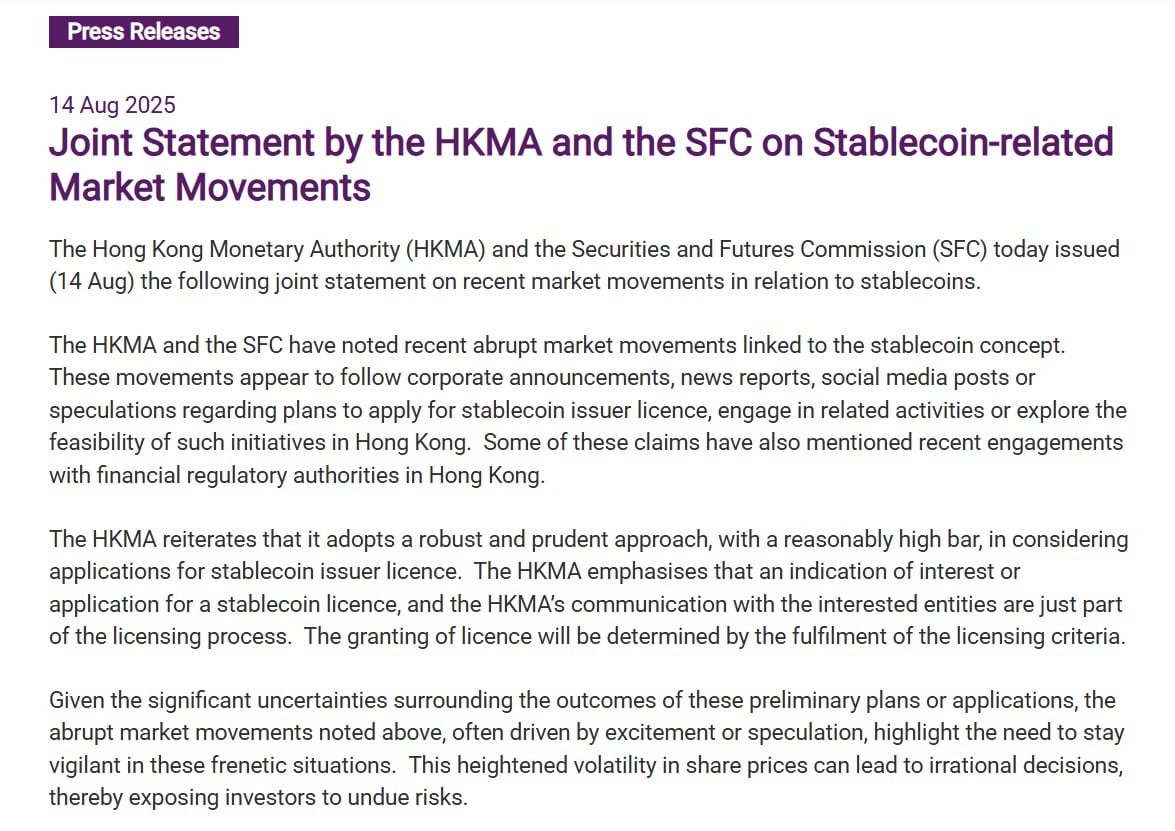Stablecoins saw an impressive net inflow of $3.79 billion this week, raising their total market cap to $273.49 billion. This reflects a 1.4% increase and indicates a rising institutional interest in cryptocurrencies.
-
Tether (USDT) dominates the stablecoin market with a share of 60.42%.
-
Increasing capital flow highlights growing institutional appetite for stablecoins.
-
Hong Kong regulators have issued warnings regarding speculative trading and licensing claims.
Discover how stablecoins are influencing the crypto market with a recent $3B inflow. Stay informed and make smart investment decisions!
What are Stablecoins?
Stablecoins are digital currencies designed to maintain a stable value by pegging them to traditional assets, such as the US dollar. They provide traders and investors with a way to avert the high volatility often associated with other cryptocurrencies.
Why are Stablecoins Important in Crypto Trading?
Stablecoins offer liquidity and stability, allowing investors to quickly enter and exit trades without the risk of significant losses. According to industry reports, the market cap of stablecoins has now reached $273.49 billion, emphasizing their critical role in the crypto ecosystem.
Frequently Asked Questions
How do stablecoins maintain their value?
Stablecoins maintain their value by being pegged to traditional currencies or assets, ensuring they are less prone to the volatility typically seen in the crypto market.
Why is Tether considered the leading stablecoin?
Tether is regarded as the leading stablecoin because it holds a market dominance of 60.42%, providing reliable liquidity for traders and investors looking to avoid potential losses in volatile markets.
Key Takeaways
- Market Growth: The total market cap of stablecoins has increased to $273.49 billion, showing significant market confidence.
- Regulatory Scrutiny: Regulatory bodies are tightening oversight on stablecoin trading, emphasizing the need for due diligence.
- Institutional Interest: Increased inflows indicate a growing appetite from institutional investors in the stablecoin market.
Conclusion
The recent developments in the stablecoin market—evidenced by a $3B inflow—highlight their importance as a stable investment option amidst the volatility of traditional cryptocurrencies. With regulatory scrutiny intensifying, investors are encouraged to conduct thorough research and stay informed about market trends. This emerging landscape presents both opportunities and challenges in the world of digital finance.

